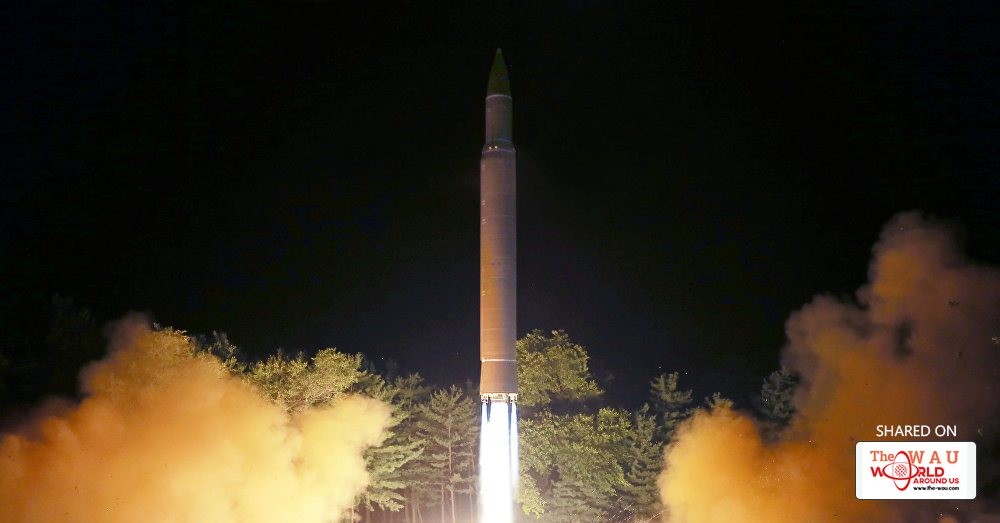Even if North Korea has successfully constructed an ICBM that can fly into low earth orbit en route to hitting targets like the continental United States, American and South Korean experts have expressed doubts that the missile will be an effective weapon by the time it completes the journey.
Footage from the Friday launch of the DPRK's Hwasong-14 re-entry vehicle was captured by Japanese sources. The missile successfully launched and left Earth's orbit, reaching heights of 2,300 miles — but objects re-entering Earth from orbit are subjected to intense pressures and temperatures of 3,000 degrees Fahrenheit, and the Hwasong-14 was not able to withstand this trial. According to experts, it fell apart before it could even hit the sea.
American missile expert Michael Elleman with the International Institute for Strategic Studies says the re-entry vehicle fell apart about 2 to 2.5 miles above the Earth's surface.
In short, a reasonable conclusion based on the video evidence is that the Hwasong-14's re-entry vehicle did not survive during its second test," said Elleman, writing on 38 North. "If this assessment accurately reflects reality, North Korea's engineers have yet to master re-entry technologies and more work remains before Kim Jong-un has an ICBM capable of striking the American mainland."
Elleman's colleague, defense analyst Kim Dong-yub with the Institute for Far Eastern Studies at Kyungnam University in Seoul, said that North Korea is still trying to create a viable ICBM. While the Hwasong-14 test on Friday showed off the missile's range, it doesn't do much good if it breaks apart before it hits its target.
"Considering the cost and efforts they put into tests, North Korea likely would have tried to detonate the warhead properly; they apparently failed this time, but could focus on this aspect in future tests," Kim said, adding that warhead reentry was one of the few remaining key steps between the DPRK and global ICBM reach.
The Hwasong-14 was first tested on July 4, American Independence Day. Analysis of the two tests' data suggests that most of the United States is in range of the DPRK's missiles, including major cities such as Los Angeles and Chicago. Jeff Lewis of the Middlebury Institute of International Studies even argued that the missile could strike New York or Washington, DC.
"The key here is that North Korea has a second successful test in less than one month," said Elleman. "If this trend holds, they could establish an acceptably reliable ICBM before year's end." Of course, the DPRK doesn't put out much in the way of statistics about their missile launches to give international observers absolute confidence in their predictions about the project's progress.
Share This Post















